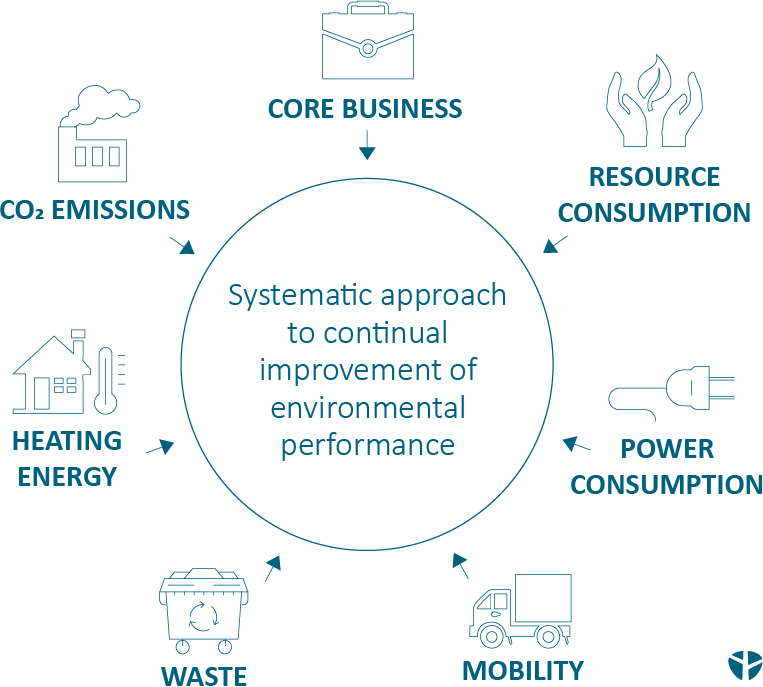FAQ
Frequently asked questions on EHS management
EHS – HSE – SHE: Is there a difference?
The terms EHS, HSE and SHE are consistent in content. They stand for the same topic and are often used synonymously. All of them are abbreviations for the terms Environment, Health, and Safety, but in a modified order (e. g. HSE management stands for Health Safety Environment).
What falls under Environment, Health and Safety management?
Environment, Health, and Safety management, or EHS Management, is a common term in laws, regulations and a company’s quality management. It addresses potential sources of hazards and risk and ensures occupational safety. In addition to health and safety policy in the company, the optimization of processes and the introduction of management systems also play a major role. Thus, EHS management encompasses a wide range of activities to be legally compliant, ensure safety and enable efficiency in companies. It is also the basis for a company’s sustainability management, which relies on data, for example. Therefore, our EHS management services also include indicator and data management considerations.
What are the EHS management standards?
There are different EHS management standards. Among the best-known are ISO9001 for quality management systems and ISO14001 for environmental management systems. ISO45001 is a newer standard for occupational health and safety management systems, which has some overlapping with ISO14001. ISO50001 refers to energy management and is also an important focus topic for EHS management and sustainability improvements. At denkstatt we work with the most widely used EHS management standards and support you in finding your company’s gaps and potentials during internal audits.
What are the costs of implementing a management system?
The costs and required resources vary substantially depending on the complexity of your company. Also, the status quo of the adaptation and optimization of processes and standard-relevant requirements are important cornerstones for cost calculation. We suggest conducting a gap analysis, which provides a clear picture. Learn more about our service for the implementation of management systems.
How can I get my employees to support the strategic ambition in EHS topics?
Motivating and convincing your employees to support your EHS strategy is classic change management and depends on different levers. For example, building up and anchoring processes to improve internal communication is one of the key aspects of the implementation process in management systems.


